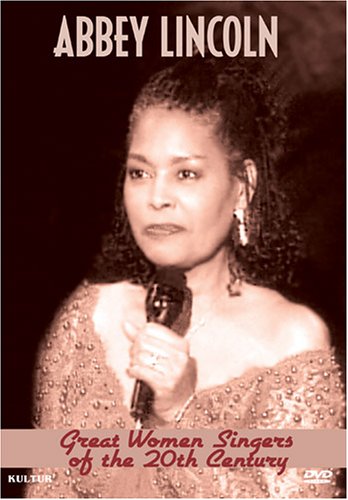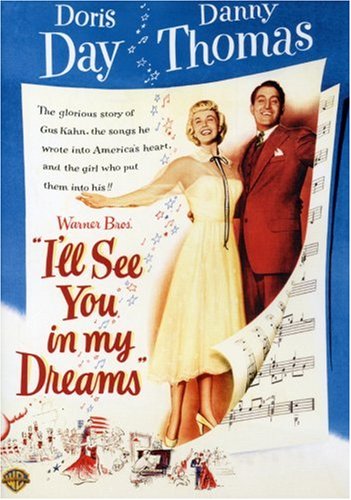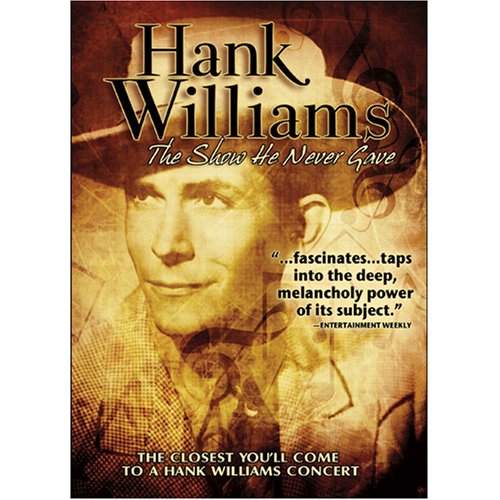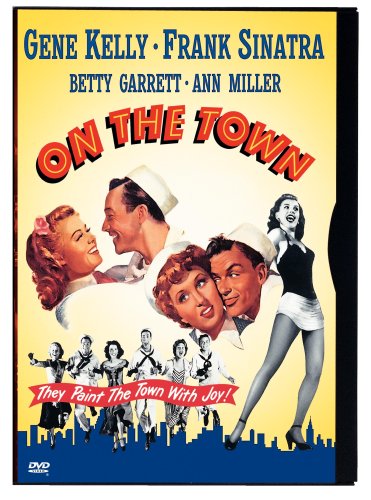Moulin Rouge! [Blu-ray] Review

Studio: Tcfhe Release Date: 10/19/2010 Run time: 120 minutes Rating: Pg13
Moulin Rouge! [Blu-ray] Review

Musicals 20 Movie Pack Review

Great Women Singers of the 20th Century - Abbey Lincoln Review

This theatre performance, taped in 1991 at the Promenade Theatre in New York City, has never been seen in its entirety. Presented "in the round," Abbey Lincoln, looking exquisite and backed by a jazz quintet including saxophonist Steve Coleman, she offers a fresh choice of original compositions including "Bird Alone" and "When I’m Called Home" as well as standards like the telling "Brother, Can You Spare A Dime?" It is a memorable "ENCORE" evening that illuminates her successful comeback at the time
Warner Gangsters Collection, Vol. 3 (Smart Money / Picture Snatcher / The Mayor of Hell / Lady Killer / Black Legion / Brother Orchid) Review

The best movies of the bunch fall farthest from the gangster family tree. Picture Snatcher (1933) is exemplary early Cagney, 77 hard-charging minutes with the favorite son of the Lower East Side as a brash ex-con determined to go straight. How straight is a delicate question, since his job is scoring sensational photos for a raunchy tabloid. Picture Snatcher was made before the Production Code cast its puritanical shadow over Hollywood, and the script features two memorably morbid sequences--Cagney's debut as a literal picture snatcher, and the snapping of a clandestine prison-death-house photo--as well as abundant opportunities for risqué byplay, gallows humor, and freewheeling amorality. Lloyd Bacon (soon to direct Cagney in Footlight Parade) makes yeoman work of it all, even getting away with scenes in the newspaper's restroom, and staging a last-reel shootout ferocious enough to be worthy of a real gangster movie.
Humphrey Bogart wasn't yet a star when he appeared in Black Legion (1937), but among his pre–High Sierra assignments at Warners, here's a rare one in which he doesn't play second or third fiddle to Robinson, Cagney, and/or Pat O'Brien. It's a surprisingly powerful social-consciousness fable, in the muckraking tradition of I Am a Fugitive from a Chain Gang. Bogart plays a working-class family man with his eye on promotion to factory foreman; when the job goes instead to a co-worker with a foreign-sounding name, Bogart's character--basically a decent guy--gets drawn into a secret, Ku Klux Klan–like organization espousing "America for Americans" and ready to stomp anyone deemed less than "real 100-percent American." (Such groups weren't exactly rare at the time, as the commentary track details--nor are their sentiments unfamiliar today.) Robert Lord's original screen story was Oscar nominated, and the screenplay is careful to make Bogart's actions understandable and also to create a whole community of characters affected by the Black Legion's atrocities. The finale is uncompromising, with a last shot like a fist to the chest. Archie Mayo directed; Bogart's fellow name-below-the-title players include Erin O'Brien-Moore (impressive as his wife), Dick Foran, Joe Sawyer, and future star Ann Sheridan in her first Warners film.
Edward G. Robinson spent a lot of his Warner years resisting Little Caesar typecasting, and Smart Money (1931) is a fascinating case in point. Although the story of "Nick the Barber" recalls elements of Robinson's starmaking hit, the actor insisted on script modifications so that Nick, a compulsive gambler, emerges as a sympathetic character--and a fatally soft touch where women are concerned. His itinerary takes him from small-town barbershop with an after-hours game in the back to operating his own swank casino in the big city, but he never comes off as a criminal except by prissy legal technicality. Directed by Alfred E. Green, the movie marks the sole occasion of Robinson and Cagney working together. Really, it's Robinson's picture--though Jimmy the Gent outshines him in a classic scene where they discuss a woman's attributes ... in mime.
In Lloyd Bacon's Brother Orchid (1940), it's Bogart who's relegated to supporting status while Robinson plays "Little John" Sarto, a comic variant of guess-who who decides to retire as mob boss and pursue "class" by collecting art in Europe (an inside joke on Robinson's real-life standing as art connoisseur?). After blowing his fortune, Sarto attempts to reclaim his old job, which his former lieutenant (Bogart) isn't about to give up. Taken for the proverbial ride, Little John escapes and finds shelter among the Floracians, a monastic order devoted to "beautifying the lives of men with flowers." Thus is "Brother Orchid" set on the path to spiritual rebirth--after settling some old business, of course. Robinson agreed to make this gangland comedy if Warners let him star in a pair of historical biopics, Dr. Ehrlich's Magic Bullet and A Dispatch from Reuter's--his own pursuit of class, perhaps. It was a good deal all around. Brother Orchid also features Ann Sothern as Sarto's patient moll, Ralph Bellamy in one of his trademark amiable-sap roles, Donald Crisp and Cecil Kellaway among the horticultural monks, and a funny, Runyonesque screenplay by Earl Baldwin.
The final entries, two more from Jimmy Cagney's busy year of 1933, both suffer from weak scripts. Archie Mayo's The Mayor of Hell focuses on the plight of inner-city youth sent to reform schools where they're more likely to be destroyed than rehabilitated. We get a full two reels of setup (featuring troubled lad Frankie Darro, soon to star in Wild Boys of the Road) before Cagney shows up 24 minutes in, as a political hack whose newly won sinecure of "deputy commissioner" includes token responsibility for Peakstown State Reformatory. A former slum kid himself, he evolves from "What do I have to do to make things look regular?" to taking an active interest in his charges, at the mercy of a warden (Dudley Digges) who's both corrupt and sadistic. An absurdly pain-free revolution reforms Hell for a fleeting moment, till a subplot involving Cagney's larcenous interests sidelines him and opens the way for a violent and anarchic climax. Roy Del Ruth's Lady Killer is much lighter fare, with Cagney as a movie-theater usher who falls victim to a con game, then joins in the scam and soon is running the outfit. When one ornate caper results in a bystander getting hurt, Cagney has to hop a train two steps ahead of the law. At the other end of those train tracks is Hollywood, where he catches the eye of someone from Central Casting who thinks he'd make a good gangster type in the movies. Full-fledged stardom is only a reel change away--whereupon that old gang of his comes sniffing around. Some of this is diverting, some is just sloppy; the film gives the impression of having had different writers assigned from scene to scene. However, the satiric jabs at Hollywood are fun, and Cagney, as always, has his lyric moments.
All the films in the set look spiffy, and each comes with a "Warner Night at the Movies" package of cartoons, trailers, and sometimes other short subjects. The full-length commentary tracks range from fanboy blither (Picture Snatcher, alas) to authoritative testimony, with Anthony Slide and Patricia King Hanson offering socio-historical insights on Black Legion and veteran noiristes Alain Silver and James Ursini paying close attention to matters of style and nuance on Smart Money (though one of them twice misstates that the Hawks-Hughes Scarface was made at Universal). --Richard T. Jameson PICTURE SNATCHER (1933): An admirably tough B-picture enlivened by an energetic James Cagney performance, Picture Snatcher stars Cagney as Danny Kean, a former gangster who has decided to go straight after a stretch in the big house. Danny has fallen for Patricia (Patricia Ellis), the daughter of the cop who put him away (Robert Emmett O'Connor). Dad isn't convinced that Danny has left his life of crime behind him, and he isn't too impressed with his new career taking pictures for a sleazy tabloid newspaper. Between getting a lurid photo of a fireman in front of a burning building (where his wife and her lover met their fate) and a daring shot of a woman being executed (based an actual incident when a New York Daily News photographer got a photo of Ruth Snyder in the electric chair), Danny's work is selling papers but hardly making Officer O'Connor think his daughter is in good hands (especially since he was in charge of press security for the execution). Short, sweet and sassy, Picture Snatcher is the sort of gutsy fare Warner Bros. did best in the 1930's; Ralph Bellamy turns in a great supporting performance as Danny's boozy editor LADY KILLER (1933): Based on the novel by Carson McCullers, The Heart is a Lonely Hunter stars Alan Arkin as John Singer, who is deaf. Singer moves from a small town in order to be close to his institutionalized deaf and mentally impaired friend Antonapoulos (Chuck McCann). Singer rents a room with a family whose father, Mr. Kelly (Biff McGuire), is unable to earn a living due to a serious injury. His teen-aged daughter Mick (Sondra Locke, in her film debut) is at first resentful of Singer's presence, but he ingratiates himself by introducing her to classical music (which he can "feel," if not hear). Singer likewise tries to brighten the lives of such unfortunates as alcoholic Blount (Stacy Keach Jr., also making his first film appearance), dying black doctor Copeland (Percy Rodriguez), and Copeland's poverty-stricken daughter (Cicely Tyson). SMART MONEY (1931):Edward G. Robinson and James Cagney were teamed for the only time in their careers in Smart Money. Robinson has the larger part as a small-town barber who fancies himself a big-time gambler. He travels to the Big City in the company of his younger brother Cagney, who wants to make sure that Robinson isn't fleeced by the high-rollers. Unfortunately Robinson has a weakness for beautiful blondes, most of whom take him for all his money or betray him in some other manner. The cops aren't keen on Robinson's gambling activities, but they can pin nothing on him until he accidentally kills Cagney in a fight. The incident results in a jail term for manslaughter, and a more sober-sided outlook on life for the formerly flamboyant Robinson. Watch closely in the first reel of Smart Money for an unbilled appearance by Boris Karloffas a dope pusher. BLACK LEGION (1937): Factory worker Frank Taylor believes that he has missed out on a deserved promotion when it is instead given to a Polish immigrant. Angry and looking for a scapegoat, he is an ideal mark for the Black Legion, an underground group who want to get rid of immigrants and racial minorities through violent means. Frank joins the Legion, and with his new friends, he dons black robes and drives the Polish family from their home. His aim achieved, Frank gets his job, but soon the Legion begins to take up more of his time and money, and turns his character darker and darker. He leaves his wife, begins to drink heavily, and soon is on a downward spiral. MAYOR OF HELL (1933): Five members of a teen-age gang, including leader Jimmy Smith, are sent to the State Reformatory, presided over by the melodramatically callous Thompson. Soon, Patsy Gargan, a former gangster appointed Deputy Commissioner as a political favor, arrives complete with hip flask and blonde. Gargan falls for activist nurse Dorothy and, inspired by her, takes over the administration to run the place on radical principles.
Ragin' Cajun - Doug Kershaw in Concert Review

Best of Europe: Music Lover's Europe (2pc) (W/Dvd) [Blu-ray] Review

George Lynch Review

Fisher Price - Nature Baby Review

Chitty Chitty Bang Bang (Two-Disc DVD/Blu-ray Combo in DVD Packaging) Review

I'll See You in My Dreams Review

Lee Roy Parnell: The Art of Slide Guitar Review

Acordeon, Vol 1: Tu Puedes Tocal El Acordeon Ya! (Spanish Language Edition) (DVD) Review

Hank Williams: The Show He Never Gave Review

The Wiggles: Splish Splash Big Red Boat Review

DVD Features:
Featurette
Other
Photo gallery
Mel Bay The American Fiddle Method Volume 1 Review

I Love Lucy - The Complete Sixth Season Review

On the Town Review
